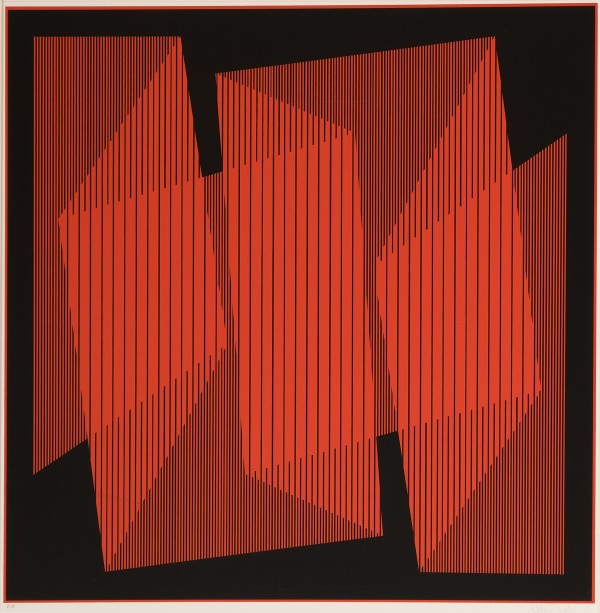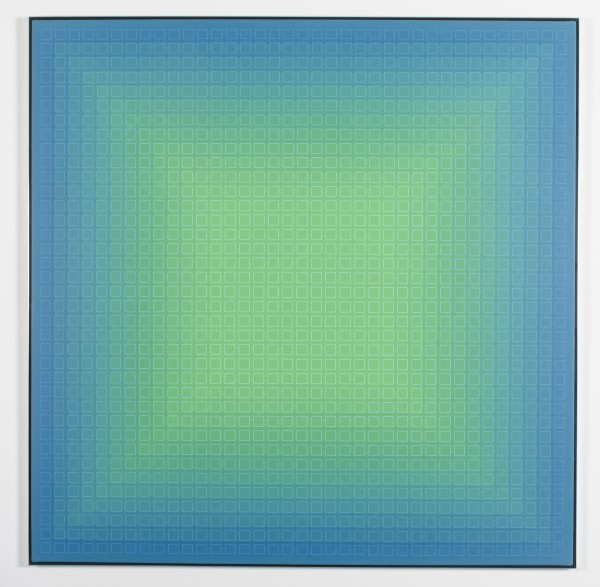
Op artist Julian Stanczak celebrated at Akron Art Museum
In a recent crossword puzzle, a clue was “lively art,” and the answer was “Op Art.” Here’s another clue – whose art helped inspire the term Op Art? The answer is Julian Stanczak. Some 20 or so of his works are on display at the Akron Art Museum, a Knight Arts grantee, in an exhibition called “Line Color Illustion: 40 Years of Julian Stanczak.”
Stanczak was and still is fascinated with the idea of color and how we perceive it. Early in his career, Stanczak’s work came to the attention of a New York gallery owner, Martha Jackson, who was traveling through the Midwest. She happened upon a show in which Stanczak was displayed and decided to feature his creations in a New York show.
Though Stanczak preferred to call his work “perpetual abstraction,” Jackson promoted her show as “Optical Painting,” which the media picked up on as Op Art. A movement was born.
If you want to get into his work, guess how many colors are represented in the various pieces on display. For instance, Stanczak used simple black and white in one of his transparencies pieces called “Intravert I.” When studied and mused upon, a viewer can begin to see other shades – purple somehow coming through as one tone.
In his “It’s Not Easy Being Green,” one might think in this grid work that there are two basic colors being employed – blue and green. On closer study, there are actually 45 different colors.
Julian Stanczak, “It’s Not Easy Being Green.” Photo courtesy of Akron Art Museum
How does the artist do it? How indeed. You can see, if you look closely enough that Stanczak juxtaposes color and manipulates the closeness or distance between separations of colors. Stanczak may begin by painting a canvas black or white, or green or blue, and then applying stripes of tape (from his own tape machine) in varying distances between lines before he applies the second, or 44th color. According to him, the eye does the rest by making connections and applying some kind of order to what it is looking at.
It’s hard to continue to stare at only one place on the canvas, for the lines and grids and angles draw the eye from side to side, from place to place, and in doing so, let the viewer become aware of how much more color he or she is beginning to see.
Julian Stanczak, “Dual Glare.” Photo courtesy of Akron Art Museum
All that experience is summed up in Stanczak’s hope; he wants the viewer to be “awash in color.”
“Line Color Illusion: 40 Years of Julian Stanczak” will be on display 11 a.m.-5 p.m. Wednesday-Sunday with extended hours until 9 p.m. on Thursday through November 3 at the Akron Art Museum, 1 S. High St., Akron; 330-374-9186; www.akronartmuseum.org. Admission for all exhibits is $7 ($5 for students and seniors). On the third Thursday of every month, individual admission is free, although special exhibitions require paid admission.
Recent Content
-
Artsarticle ·
-
Artsarticle ·
-
Artsarticle ·



